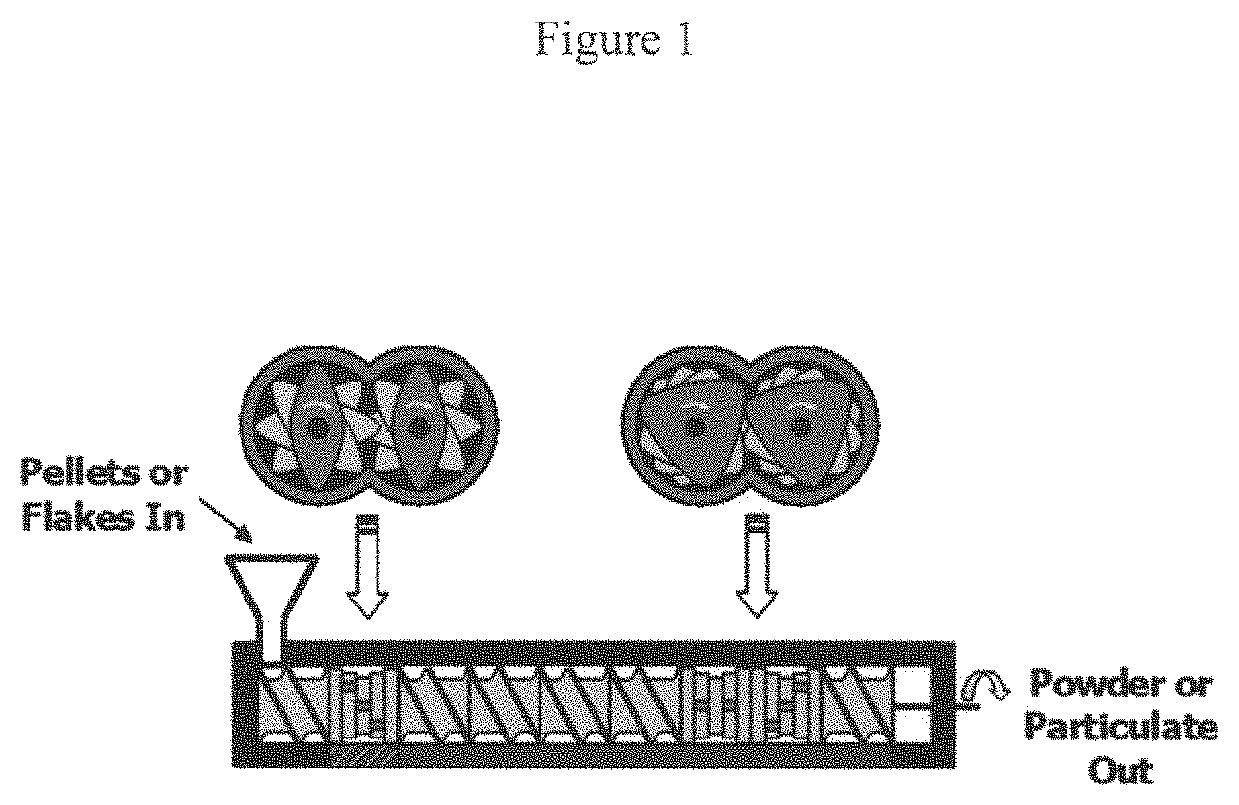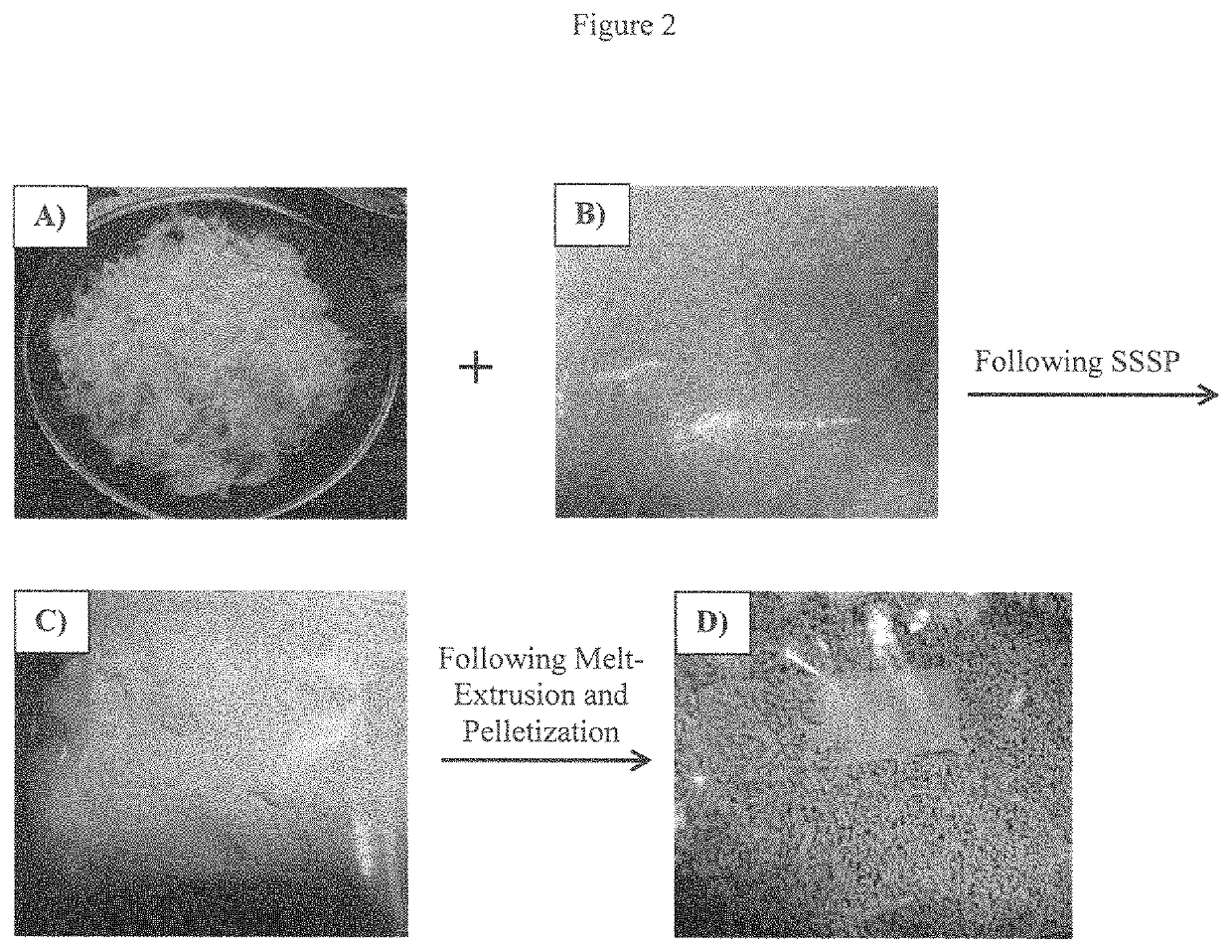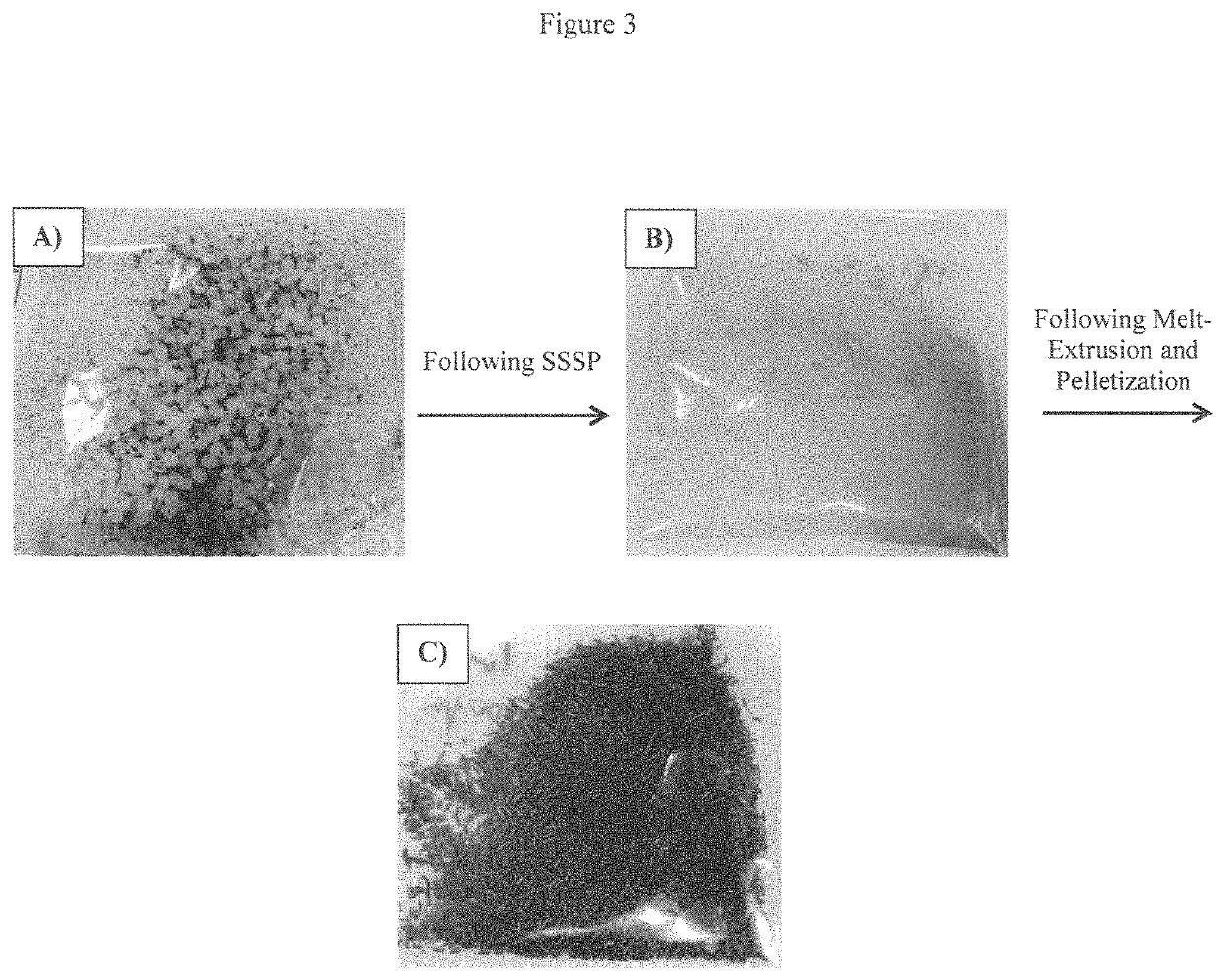Polymer-organic matter composites using solid-state shear pulverization
- Summary
- Abstract
- Description
- Claims
- Application Information
AI Technical Summary
Benefits of technology
Problems solved by technology
Method used
Image
Examples
example 1
[0036]The SSSP apparatus employed in preparation of the following composites (Examples 2-4, below) is a modified twin-screw extruder from Berstorff (Model ZE 25). It has a length to diameter ratio (L / D) of 26.5, where the first section has a barrel / screw diameter of 25 mm (L / D=19) and remaining section has a diameter of 23 mm (L / D=7.5). The screw elements involved in the 25 mm-section are spiral conveying and bilobe kneading elements, while those in the 23 mm-section are trilobe shearing elements. During operation, the barrels are cooled by a recirculating ethylene glycol / water (60 / 40 wt / wt) mixture at −7° C. supplied by a Budzar Industries WC-3 chiller, which allows for repeated fragmentation and fusion steps in the solid-state below the glass transition (Tg) or melt transition (Tm) of the processed polymeric material. For this pulverization instrument, the barrel section with several kneading elements in the upstream portion of the screws is termed the mixing zone. A long conveyin...
example 2
[0037]The use of chicken feathers as an additive to polymeric materials presents several major issues that must be overcome before they can be considered as a viable filler option. First, the fibrous feathers cannot be well dispersed at the low temperatures using conventional melt processing. Accordingly, it has been found that the fibers are thermally stable for long periods of time up to 200° C., but the best composite properties were found at processing temperatures of 205° C. and above, where the fibers are only stable for a few minutes. Second, studies have shown that processing chicken feathers at high temperatures releases hazardous gases such as hydrogen sulfide and sulfur dioxide; therefore, novel processing techniques must be employed to retain the intrinsic properties of the fibers and to eliminate the release of hazardous gases by processing at reduced temperatures. Finally, it is not possible to obtain good mixing of the feathers in their native form and matrix polymers...
example 3
[0039]The major issue with adding used coffee grounds to polymers via conventional methods, like melt-processing, is the huge difference in viscosities. In the melt state, polymers will flow whereas coffee grounds will not. It is the major differences in viscosities that make it very difficult to disperse the coffee grounds effectively and efficiency. As mentioned previously, poor dispersion leads to unfavorable properties or the inability to produce the composite material. SSSP at low-temperature can be used to overcome these major processing issues to successfully produce polymer / used coffee ground composites that have unique physical properties. Ultimately, the use of SSSP can significantly reduce the environmental impact of waste coffee grounds and provide a low-value filler for high value applications.
[0040]Again, using the present invention these processing issues have been overcome to make polymer / used coffee ground composites. FIG. 3a shows neat PP with hand-mixed used coffe...
PUM
 Login to View More
Login to View More Abstract
Description
Claims
Application Information
 Login to View More
Login to View More - R&D
- Intellectual Property
- Life Sciences
- Materials
- Tech Scout
- Unparalleled Data Quality
- Higher Quality Content
- 60% Fewer Hallucinations
Browse by: Latest US Patents, China's latest patents, Technical Efficacy Thesaurus, Application Domain, Technology Topic, Popular Technical Reports.
© 2025 PatSnap. All rights reserved.Legal|Privacy policy|Modern Slavery Act Transparency Statement|Sitemap|About US| Contact US: help@patsnap.com



